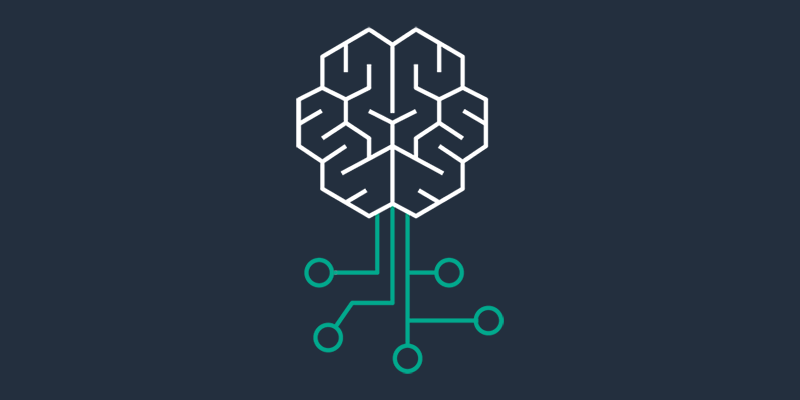In an exciting development in artificial intelligence, Amazon has announced significant updates to its Claude 3.5 model family, integrated into Amazon Bedrock. This advancement is designed to further elevate AI model intelligence while maintaining efficient speed and cost. The Claude 3.5 model family now boasts three new features that promise to enhance software development and automate various computational tasks.
Enhanced Claude 3.5 Sonnet
The first significant addition is the upgraded Claude 3.5 Sonnet. This model builds on the strengths of its predecessor, offering increased intelligence at no additional cost. It excels in solving real-world software engineering problems and managing complex workflows. The model supports the entire software development lifecycle—from design to bug fixes, maintenance, and optimization. It can create more advanced chatbots that communicate with a warm, human-like tone. Additionally, this upgraded version is adept at knowledge-based question-and-answer platforms, extracting data from visuals such as charts and diagrams, and automating repetitive tasks.
Introduction of Computer Use
The second major feature is the "computer use" capability, available in public beta through Amazon Bedrock. This feature allows Claude to interact with computer interfaces in a manner similar to human users—by viewing a screen, moving a cursor, clicking buttons, and typing text. This functionality is achieved by integrating tools that can execute computer actions like keystrokes, mouse clicks, text file editing, and shell command execution. Developers can integrate these features into their solutions by constructing an action-execution layer and granting screen access to Claude 3.5 Sonnet. This innovation opens new avenues for AI-powered applications, such as automating software testing, back-office tasks, and implementing advanced software assistants.
Claude 3.5 Haiku
The third feature, Claude 3.5 Haiku, is set for release soon. It combines rapid response times with enhanced reasoning capabilities, making it ideal for tasks requiring both speed and intelligence. Claude 3.5 Haiku offers fast and accurate code suggestions, interactive chatbots with quick response times for customer service, e-commerce, and education platforms. For industries handling large volumes of unstructured data—such as finance, healthcare, and research—Claude 3.5 Haiku helps efficiently process and categorize information.
Performance Improvements
According to Anthropic, the upgraded Claude 3.5 Sonnet shows remarkable improvements over its predecessor, particularly in coding. It has achieved notable advancements in industry benchmarks, outperforming all publicly available models. For example, its performance on the SWE-bench Verified has improved from 33% to 49%. It also achieved a better score on the TAU-bench, an agentic tool use task, increasing from 62.6% to 69.2% in the retail domain, and from 36.0% to 46.0% in the airline domain.
New Frontier in AI Interaction
The computer use capability represents a new frontier in AI interaction. Rather than limiting the model to API usage, Claude has been trained on general computer skills, enabling it to use a broad range of standard tools and software programs. This means that applications can leverage Claude to interact with computer interfaces. Developers can harness this API to translate prompts (e.g., “find me a hotel in Rome”) into specific computer commands (such as opening a browser and navigating websites).
Integrated Tools
When invoking the model, developers now have access to three new integrated tools that act as a virtual set of hands to operate a computer:
- Computer Tool: Receives a screenshot and a goal as input and returns a description of the mouse and keyboard actions required to achieve that goal.
- Text Editor Tool: Allows operations like viewing file contents, creating files, replacing text, and undoing edits.
- Bash Tool: Provides commands that can be executed on a computer system, allowing interaction at a lower level akin to a user typing in a terminal.
These tools offer vast possibilities for automating complex tasks, from data analysis and software testing to content creation and system administration.
Using the Upgraded Claude 3.5 Sonnet
To begin using the upgraded Claude 3.5 Sonnet, users can navigate to the Amazon Bedrock console and request access to the new model. The model’s vision capability can be tested by uploading image files and prompting the model to extract relevant information.
Developers can also utilize AWS Command Line Interface (CLI) and SDKs to interact with the model. A sample AWS CLI command can be used to engage the Amazon Bedrock Converse API and filter results to only show text content. Similarly, the AWS SDK for Python (Boto3) can analyze images and process information.
Integrating Computer Use
To demonstrate how computer use functions, a Python script can be executed that passes a screenshot image and a prompt into the model. The script invokes the upgraded Claude 3.5 Sonnet using the new syntax required for computer use. The model’s response includes a tool_use section that indicates the first step to be executed on the desktop, such as moving the mouse to specific coordinates to start a browser.
Claude 3.5 Sonnet Availability
The enhanced Claude 3.5 Sonnet is now available in Amazon Bedrock in the US West (Oregon) AWS Region, offered at the same cost as the original Claude 3.5 Sonnet. For the most current information on regional availability, refer to the Amazon Bedrock documentation. Detailed cost information can be found on the Amazon Bedrock pricing page.
In conclusion, the Claude 3.5 model family, with its upgraded capabilities, offers software developers new opportunities to integrate advanced AI features into their applications. By utilizing the computer use feature, developers can automate complex desktop workflows, improve software testing processes, and create more sophisticated AI-powered applications. As these capabilities continue to evolve, they hold the potential to revolutionize how developers interact with AI and computer systems.
For more information on these features, visit the Claude models section of the Amazon Bedrock documentation. Experience the enhanced Claude 3.5 Sonnet in the Amazon Bedrock console today, and share your feedback on AWS re:Post for Amazon Bedrock. Explore deep-dive technical content and discover how Amazon’s Builder communities are leveraging Amazon Bedrock on community.aws.
For further exploration, you can refer to the original announcement on the AWS website here.
For more Information, Refer to this article.


































